- Education
-
Research
Current research
Talent
-
Collaboration
Businesses
Government agencies and institutions
Alumni
-
About AU
Organisation
Job at AU
The operating theatres and the clinical department have been deserted at the university’s odontological hospital, and all clinical training has been cancelled since 12 March. In mid-May, the training clinics were partly opened for selected students from the Department of Dentistry and Oral Health. Now, teaching and treatment are taking place despite the very strict hygiene requirements and very different working procedures.
2020.05.28 |
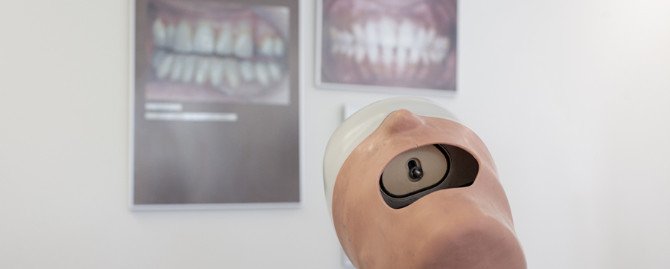
These days, people are rarely asked to ”rinse and spit” at the Department of Dentistry and Oral Health. The number of students and patients has been significantly reduced. Instead, a large number of phantom manikins have been seated in the dentist chairs, so that the students can get as much clinical teaching as possible.
These days, people are rarely asked to ”rinse and spit” at the Department of Dentistry and Oral Health. The number of students and patients has been significantly reduced. Instead, a large number of phantom manikins have been seated in the dentist chairs, so that the students can get as much clinical teaching as possible.
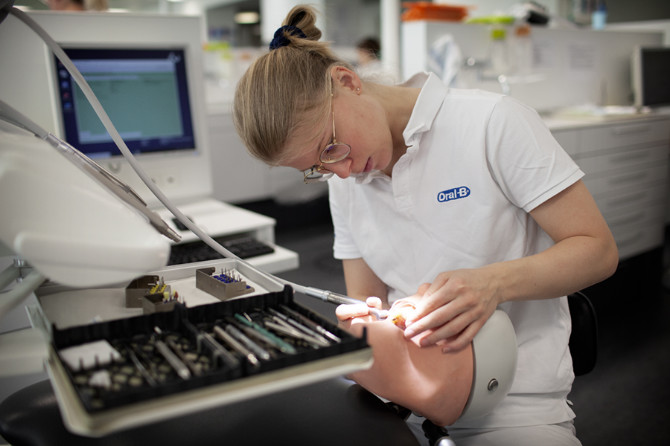
BACK AGAIN. – It feels really strange to have a drill in my hand again, but it’s really great to be back again, says Anette Falkenham. She is a dental student on her eighth and final semester and has just begun her first clinical training following ten weeks at home. - We were supposed to be working on real patients. It's not exactly the same thing with phantom manikins, but it's definitely better than nothing.
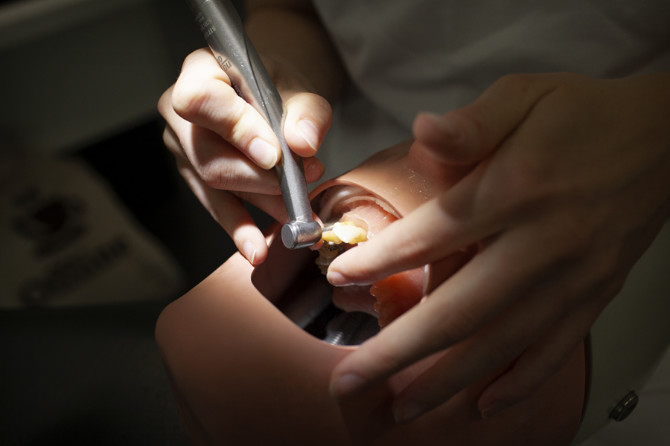
MIST. 300,000 rpm. That is how fast some instruments rotate to enable them to penetrate tooth enamel. They require constant cooling so they do not burn the patients, but it is also an infection risk because of the 1.5 metre of aerosol mist surrounding the dentist’s chair. Half an hour has been allocated between each patient. By this time the aerosol has fallen to the ground and there is enough time for a thorough cleaning of all surfaces, instruments, chair and lamp.
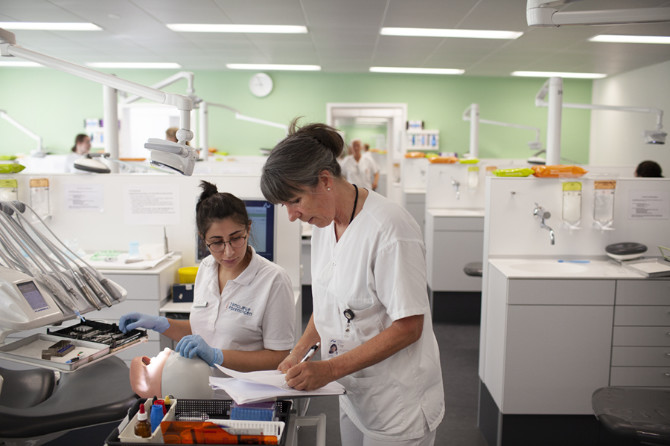
MUSICAL CHAIRS. - What’s your name, asks Head of Clinic Birgitte Lüttge. She keeps count of the students. Capacity is set at forty and no more students are allowed. Right now there is a student to many and one less dentist’s chair than required. The students receive an email granting them access the day before their teaching - and if you are not on the head of clinic’s special list, you will be sent home again.
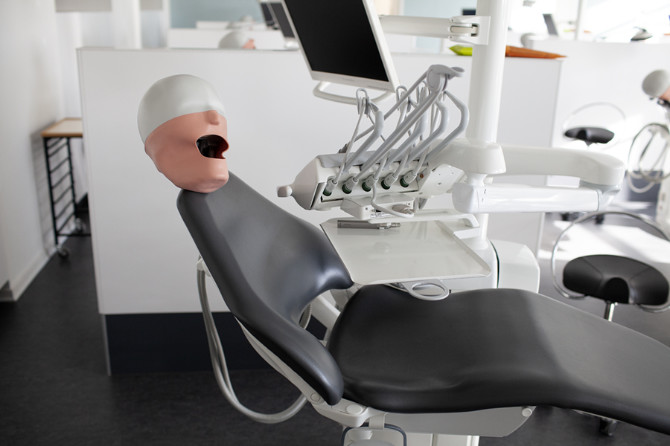
PHANTOM. The entire joint clinic on the third floor of the department has been converted for simulation training. The chairs are normally filled with people, but now phantom heads are mounted on each and every one of the chairs. Inventive solutions have been needed together with a gigantic planning effort to minimise the risk of infection and, at the same time, maximise the teaching for as many students as possible without overloading the school's access quota.

FULLY DECKED OUT. Visors or protective glasses, surgical masks, disposable gloves and gowns with long arms are mandatory in these times for patient treatment where aerosols are formed. The dental specialist programme in orthodontics has been part of the department’s emergency service. Only every other chair is in use. The young patients have teeth that could suffer permanent damage or die if the treatment is stopped or postponed. Orthodontics is so highly-specialised that no other dental practices can take over.
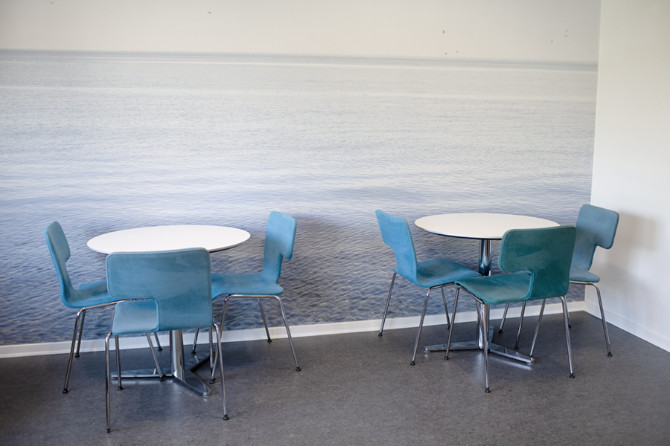
EMPTY. The only thing left in the waiting room is the hand disinfectant. The magazines have been removed and the patients must now wait in their car in the car park. They call a special number when they arrive. And are then fetched by an employee and taken directly to the dentist’s chair. No frills. No detours.
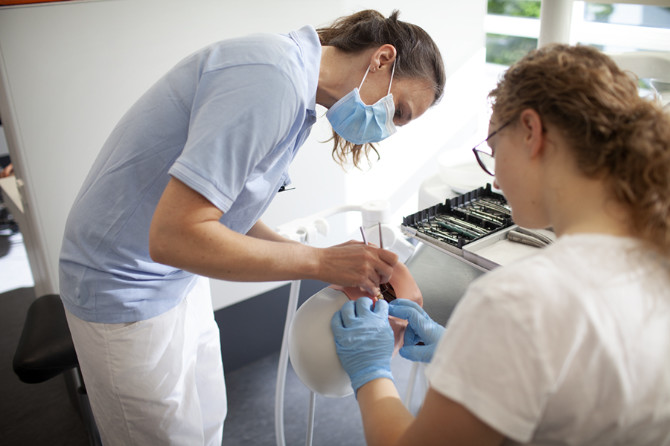
HANDS UP. You must stay where you are. You must not wonder around under any circumstances, say the personal. The one metre rule must be complied with and the risk of infection minimised. If the students need help or lack material, they must raise their hand and wait until the dental surgery assistants or one of the clinical teachers comes over to them. And if the students need the toilet, they will be escorted there and back again.